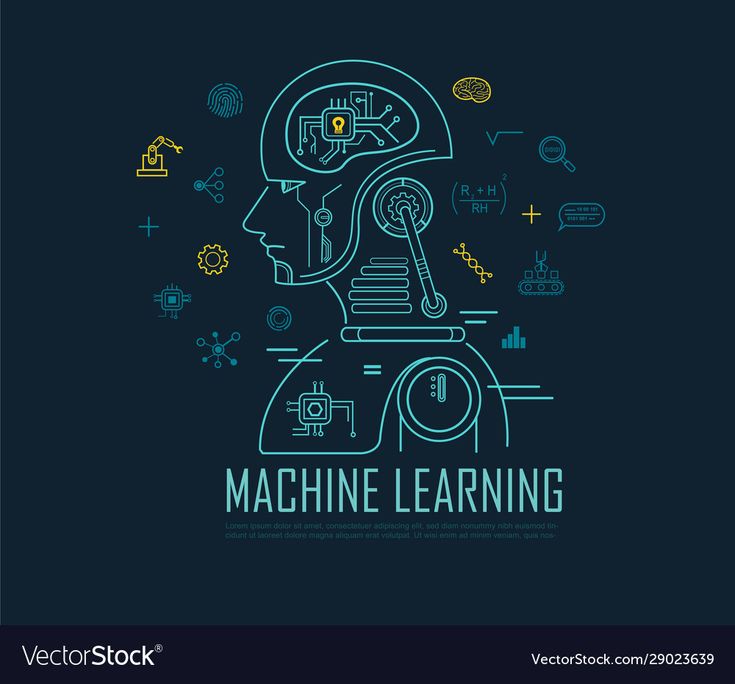1. Introduction
Training deep learning models efficiently is crucial for developing high-performance systems capable of tackling complex tasks. The increasing complexity of models and the volume of data available today require a strategic approach to training. This article explores the essential concepts, strategies, and best practices for efficiently training deep learning models, ensuring optimal performance while minimizing resource consumption.
2. Understanding Deep Learning Model Training
A. Definition of Model Training
Model training involves teaching a neural network to make predictions or classifications based on input data. This process typically entails adjusting the model’s parameters to minimize the difference between predicted outputs and actual labels.
B. Components of the Training Process
The training process consists of several key components:
- Data Preparation: The quality and quantity of data significantly impact model performance.
- Model Selection: Choosing the right architecture is critical for the task at hand.
- Training Algorithm: The optimization algorithm determines how the model learns from data.
- Evaluation Metrics: Metrics help assess model performance and guide adjustments.
3. Data Preparation
A. Importance of Quality Data
Quality data is the foundation of effective deep learning. A well-prepared dataset leads to better model performance and generalization.
B. Data Collection Strategies
Gathering diverse and representative data is essential. This can include collecting new data, leveraging existing datasets, or using web scraping techniques.

C. Data Preprocessing Techniques
- Normalization and Standardization: Scaling features to a standard range can improve convergence speed.
- Data Augmentation: Techniques like rotation, flipping, and cropping can increase dataset diversity, helping to prevent overfitting.
- Handling Missing Values: Imputation or removal of missing data ensures the dataset is complete and usable.
- Splitting Data into Training, Validation, and Test Sets: This division helps evaluate model performance and prevent overfitting.
4. Choosing the Right Model
A. Factors to Consider When Selecting a Model
- Complexity of the Task: More complex tasks may require deeper or more sophisticated architectures.
- Available Computational Resources: Considerations like GPU availability can dictate model size and complexity.
- Size of the Dataset: Larger datasets can support more complex models, while smaller datasets may benefit from simpler architectures.
B. Popular Deep Learning Architectures
- CNNs for Image Data: Convolutional neural networks excel in image classification and recognition tasks.
- RNNs and LSTMs for Sequential Data: Recurrent neural networks are effective for tasks involving sequences, such as time series and natural language processing.
- Transformers for Natural Language Processing: Transformers have revolutionized NLP tasks with their ability to model long-range dependencies.
5. Efficient Training Strategies
A. Optimizers and Learning Rate Scheduling
- Common Optimizers: Algorithms like Stochastic Gradient Descent (SGD), Adam, and RMSprop are widely used for training.
- Learning Rate Decay Strategies: Adjusting the learning rate during training (e.g., reducing it after a set number of epochs) can improve convergence.
B. Batch Size Considerations
Choosing an appropriate batch size can impact training speed and model performance. Smaller batches can provide better generalization but may take longer to train.
C. Early Stopping and Model Checkpointing
Early stopping prevents overfitting by halting training when performance on a validation set starts to degrade. Model checkpointing saves the best-performing model during training.
D. Distributed Training
- Multi-GPU and TPU Training: Utilizing multiple GPUs or TPUs can significantly speed up the training process.
- Data Parallelism and Model Parallelism: These techniques distribute the workload across multiple devices, improving efficiency.

6. Regularization Techniques
A. Importance of Regularization
Regularization helps prevent overfitting, ensuring that the model generalizes well to unseen data.
B. Common Regularization Methods
- Dropout: Randomly dropping neurons during training can prevent the model from becoming too reliant on specific features.
- L1 and L2 Regularization: Adding a penalty to the loss function based on model weights can discourage complexity.
- Batch Normalization: Normalizing activations can stabilize and accelerate training.
7. Monitoring and Evaluation
A. Importance of Monitoring Training Progress
Monitoring training allows for real-time adjustments and insights into model performance.
B. Visualization Tools
Tools like TensorBoard and Matplotlib can provide visual insights into training progress and performance metrics.
C. Evaluating Model Performance
- Using Validation Set: Regularly evaluate the model on a validation set to gauge performance and prevent overfitting.
- Fine-tuning Hyperparameters: Adjusting hyperparameters based on validation performance can lead to improved results.
8. Model Deployment and Maintenance
A. Preparing Models for Deployment
Optimizing and converting models for deployment is crucial for real-world applications.
B. Continuous Monitoring Post-Deployment
Regularly monitoring model performance in production helps identify issues and maintain accuracy.
C. Retraining Models with New Data
As new data becomes available, retraining models ensures they remain relevant and effective.
9. Conclusion
Efficiently training deep learning models involves a combination of quality data preparation, strategic model selection, effective training strategies, and continuous evaluation. By employing these best practices, practitioners can enhance model performance while optimizing resource use. As the field continues to evolve, staying informed about new techniques and tools will be essential for success in deep learning.

10. References
- Academic papers and journals on deep learning methodologies.
- Online resources and tutorials for practical implementations.
- Relevant books and publications that provide deeper insights into deep learning and model training techniques.
FAQs
1. What is deep learning model training?
Deep learning model training is the process of teaching a neural network to make predictions or classifications based on input data by adjusting its parameters to minimize the prediction error on a given task.
2. Why is data preparation important in deep learning?
Quality data preparation is crucial because it directly impacts the model’s ability to learn. Well-prepared data leads to better model performance, reduces overfitting, and improves generalization to unseen data.
3. What are the common strategies for data preprocessing?
Common data preprocessing strategies include:
- Normalization and standardization to scale features.
- Data augmentation to increase dataset diversity.
- Handling missing values through imputation or removal.
- Splitting data into training, validation, and test sets for evaluation.
4. What factors should I consider when choosing a deep learning model?
Consider the following factors:
- Complexity of the task (e.g., image classification vs. sequence prediction).
- Available computational resources (e.g., GPU availability).
- Size and nature of the dataset (large datasets may support more complex models).
5. What are the benefits of using transfer learning?
Transfer learning allows you to leverage pre-trained models on large datasets, speeding up the training process and often leading to better performance, especially when working with smaller datasets.
6. What is the significance of early stopping during training?
Early stopping helps prevent overfitting by halting the training process when the model’s performance on a validation set starts to decline, ensuring that the model generalizes well.
7. How can I monitor the training process effectively?
You can use visualization tools like TensorBoard or Matplotlib to track training metrics such as loss and accuracy over time. Monitoring these metrics helps identify issues early in the training process.
8. What should I do if my model is overfitting?
To address overfitting, you can:
- Use regularization techniques such as dropout or L1/L2 regularization.
- Apply data augmentation to increase training data variability.
- Simplify the model architecture if it’s too complex for the available data.
Tips for Efficient Model Training
- Use High-Quality Data: Ensure your training data is diverse, representative, and clean to improve model accuracy and robustness.
- Leverage Data Augmentation: Implement augmentation techniques to artificially expand your training dataset, reducing overfitting and improving generalization.
- Experiment with Hyperparameters: Regularly tune hyperparameters such as learning rate, batch size, and number of epochs to find optimal settings for your model.
- Adopt Learning Rate Scheduling: Use learning rate decay strategies to adjust the learning rate during training, promoting better convergence.
- Implement Regularization Techniques: Incorporate dropout, L1/L2 regularization, and batch normalization to help mitigate overfitting.
- Monitor with Visualization Tools: Utilize tools like TensorBoard to visualize training progress, which can provide insights into model performance and potential issues.
- Consider Distributed Training: If you have access to multiple GPUs or TPUs, use distributed training to speed up the training process and handle larger models.
- Evaluate Regularly: Use a validation set to evaluate model performance during training, and make adjustments based on validation results.
- Prepare for Deployment: Optimize and convert your models for deployment early in the process, considering real-world application requirements.
- Stay Updated with Best Practices: The field of deep learning is rapidly evolving. Keep learning about new techniques, tools, and research to enhance your model training processes.